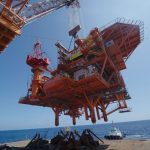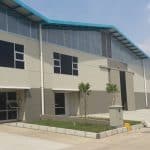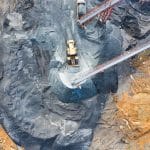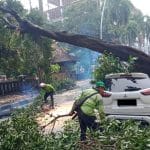Liga Asuransi – Dear Readers, how are you? I hope your business keeps growing.
As we all know that almost every aspect of the company contains risks. That is all about the business; there are always risks behind the opportunity. Right?
As a senior insurance broker, I would like to take you to discuss the risks management and insurance for oil and gas pipelaying construction.
For the new readers, welcome. I hope you enjoy reading this article. On this website, we have several articles about risk management and insurance. Please search on the above and left and right sides.
If you are interested, please share it with your friends so they can understand as you do.
What is the importance of pipes for the oil and gas industries?
Pipes are a critical component of the oil and gas industry. They transport crude oil, natural gas, and refined products from production sites to refineries, processing facilities, and end users.
Pipes play a critical role in the oil and gas industry, providing a safe, efficient, and reliable means of transporting crude oil, natural gas, and refined products from production sites to refineries, processing facilities, and end users.
Here are some of the key reasons why pipes are so important in the oil and gas industry:
- Transportation
Pipes transport oil and gas long distances, from production fields to processing facilities, refineries, and distribution centers. This is important because oil and gas are often produced in remote areas and must be transported long distances to reach the end users.
- Efficiency
Using pipes to transport oil and gas is generally more efficient than using other modes of transportation, such as trucks or rail. Pipes can transport large volumes of oil and gas quickly and efficiently, with minimal energy consumption.
- Safety
Pipelines are generally considered a safe mode of transportation for oil and gas. Unlike trucks and railcars, pipelines are not subject to the same risks of accidents and spills caused by vehicle collisions, derailments, or other incidents.
- Reliability
Pipelines are designed to operate continuously, which helps to ensure a reliable supply of oil and gas to refineries and end users. Because pipelines are buried underground, they are not subject to weather-related disruptions or other external factors that can impact different modes of transportation.
- Cost-effectiveness
In many cases, pipelines are the most cost-effective means of transporting oil and gas long distances. While building a pipeline can be expensive, the operating costs of a pipeline are generally lower than those of other modes of transportation, which can result in significant cost savings over time.
- The risks and accidents of pipeline construction and installation
Pipeline construction and installation can be risky, as several potential hazards and challenges can arise during the process.
Here are some of the key risks and accidents associated with pipeline construction and installation:
- Environmental damage
Pipeline construction can significantly impact the environment, particularly if the pipeline is built in a sensitive ecosystem. Construction activities can result in soil erosion, habitat destruction, and water pollution.
- Landowner disputes
Pipeline construction often requires the acquisition of land from private landowners. This can result in disputes over overcompensation, property rights, and environmental concerns.
- Construction accidents
Pipeline construction involves heavy equipment and machinery, which can pose a risk to workers and the surrounding community. Accidents such as excavator strikes, trench collapses, and equipment failures can result in injury, property damage, and even fatalities.
- Pipeline leaks and spills
Once a pipeline is installed, leaks and spills are always risky. This can be due to construction defects, equipment failures, or external factors such as weather or natural disasters. Leaks and spills can have severe environmental and public health consequences.
- Security threats
Pipelines are vulnerable to security threats, such as vandalism, sabotage, or terrorism. These threats can result in pipeline damage, leaks, and spills, as well as the risk of injury or loss of life.
Pipeline construction and installation can be risky, and companies must take appropriate measures to mitigate these risks.
This includes implementing safety protocols, using high-quality materials and equipment, and conducting regular inspections and maintenance to prevent leaks and spills.
Engaging with local communities and landowners is also important to ensure that their concerns are addressed and that environmental impacts are minimized.
The types of equipment needed for pipeline laying works in oil and gas.
Pipeline laying works in the oil and gas industry require various specialized equipment to ensure safe and efficient construction.
Overall, pipeline laying works in the oil and gas industry require various specialized equipment to ensure that the pipeline is constructed safely and efficiently. This equipment can be expensive and complex, requiring skilled operators and maintenance to ensure proper functioning.
Here are some of the key pieces of equipment used in pipeline laying works:
- Excavators
Excavators are used to dig trenches for the pipeline. These machines come in different sizes and can be used for different soil types.
- Pipelayers
Pipelayers are specialized machines that lift and lay pipe sections into the trench.
- Welding equipment
Welding is required to connect the different sections of the pipe. This equipment includes welding machines, welding rods, and safety gear for the welders.
- Backhoes
Backhoes move dirt, rocks, and debris out of the way when excavating trenches.
- Trenchers
Trenchers are used to cutting trenches in the ground for the pipeline. They come in different sizes and can be used for different soil types.
- Side booms
Side booms are specialized machines that lift and move pipe sections into place. They are often used in rugged terrain or areas with limited access.
- Compressors
Compressors are used to pressurize the pipeline to test for leaks and ensure that the pipeline is functioning correctly.
- Pumps
Pumps move liquids through the pipeline, including crude oil, refined products, and other fluids used in the oil and gas industry.
- Graders
Graders are used to leveling the ground and preparing it for construction. They can create a level base for the pipeline to be laid on.
- Surveying equipment
Surveying equipment measures and maps the pipeline route, ensuring that it follows the proper alignment and elevation.
The accidents happened during the pipelaying works.
The specific types of insurance coverage needed for pipelaying construction works may vary depending on the scope and location of the project, as well as local regulations and contractual requirements.
Contractors must work with a qualified insurance broker to determine the appropriate insurance coverage for their project.
Several types of accidents can occur during pipelaying work in the oil and gas industry. Here are some of the most common accidents that can occur during the pipelaying process:
- Trenching accidents
Excavation and trenching are essential to pipelaying works, and workers risk being struck by heavy equipment or buried in a trench collapse.
- Equipment-related accidents
Heavy machinery such as cranes, backhoes, and excavators are used during pipelaying works, and accidents involving these machines can cause severe injury or even death.
- Burns and explosions.
The materials used in the oil and gas industry can be volatile, and if a leak or rupture occurs, it can lead to fires or explosions.
- Hit by objects.
Workers can be struck by flying objects, such as debris or equipment, which can cause serious injury.
- Falls
Workers at height risk falling from ladders, scaffolding, or other elevated surfaces.
- Exposure to toxic materials
Workers can be exposed to toxic chemicals and gases during pipelaying work, which can cause respiratory problems or other health issues.
- Environmental accidents
Pipeline leaks or spills can cause environmental damage, including contamination of water sources, destruction of wildlife habitats, and damage to local ecosystems.
What types of insurance are needed for pipelaying construction works?
Several types of insurance are typically needed for pipelaying construction works. Here are some of the most common types of insurance coverage that may be necessary:
General liability insurance protects the contractor against claims of bodily injury or property damage caused to third parties during the pipelaying works.
- Workers’ Compensation Insurance
Workers’ compensation covers injuries or illnesses workers suffer during the pipelaying work. This insurance provides medical treatment, disability benefits, and lost wages to workers who are injured on the job.
- Equipment Insurance
Equipment insurance covers damage or loss of the heavy machinery used during the pipelaying works, such as excavators, backhoes, and cranes.
- Builders’ Risk Insurance
Builders’ risk insurance provides coverage for damages or losses during construction, including damage to the pipeline during installation.
Professional liability insurance protects against negligence claims or errors in the pipeline’s design, engineering, or construction.
- Environmental Liability Insurance
Environmental liability insurance protects against claims for environmental damage caused by pipeline leaks or spills.
Marine insurance is necessary for pipelaying works that take place offshore or in waterways and provides coverage for loss or damage of the pipeline during transportation or installation.
Overall, the specific types of insurance coverage needed for pipelaying construction works may vary depending on the scope and location of the project, as well as local regulations and contractual requirements. Contractors must work with a qualified insurance broker to determine the appropriate insurance coverage for their project.
The list of accidents happened due to pipelaying works for oil and gas
Pipelaying works for oil and gas can be hazardous, and accidents may result in injuries, fatalities, and environmental damage.
These accidents underscore the importance of proper safety protocols and procedures during pipelaying works for oil and gas.
It is essential for workers to be trained in safety measures and for contractors to implement strict safety standards and procedures to prevent accidents and protect workers and the environment.
Here are some examples of accidents that have occurred during pipelaying works for oil and gas:
- In 2016, a pipeline explosion occurred during pipelaying works in Foshan, China, killing at least five workers and injuring several others.
- In 2010, an oil pipeline ruptured during pipelaying works in the Gulf of Mexico, causing one of the world’s largest oil spills.
- In 2007, a pipeline explosion occurred during pipelaying works in Lagos, Nigeria, killing at least 269 people and injuring hundreds more.
- In 2004, a gas pipeline ruptured during pipelaying works in Ghislenghien, Belgium, causing a massive explosion that killed at least 24 people and injured 132 others.
- In 1989, an oil pipeline ruptured during pipelaying works in Alaska, causing one of the largest oil spills in US history and significant environmental damage.
Oil and gas pipelaying work accidents in Indonesia.
- In 2018, an oil pipeline owned by Pertamina, Indonesia’s state-owned oil and gas company, ruptured during pipelaying work in Balikpapan, causing a massive oil spill that spread over 20 kilometers and caught fire. The incident resulted in the deaths of five people and caused significant environmental damage.
- In 2017, a gas pipeline owned by Pertagas, a subsidiary of Pertamina, ruptured during pipelaying work in Karawang, West Java, causing a fire that killed one person and injured several others.
- In 2015, a gas pipeline owned by PT Trans Asia Gas, a state-owned gas company PT Perusahaan Gas Negara subsidiary, exploded during pipelaying work in West Java, killing three workers.
Why does pipelaying contractor need an insurance broker’s service for insurance arrangements?
Pipelaying contractors need an insurance broker’s service to arrange for insurance coverage because various types of risks are involved in the construction of pipelines, and insurance is required to mitigate these risks.
An insurance broker can help a pipelaying contractor to identify the types of risks that need to be covered and to find insurance policies that meet their specific needs.
Here are some reasons why a pipelaying contractor may need an insurance broker’s services:
- Risk assessment
An insurance broker can help a pipelaying contractor identify the risks that need to be covered, such as property damage, equipment damage, bodily injury, and environmental damage.
- Policy selection
An insurance broker can help a pipelaying contractor to select the most appropriate insurance policies to cover the identified risks. This can include liability insurance, property insurance, equipment insurance, and environmental insurance.
- Cost management
An insurance broker can help a pipelaying contractor manage insurance costs by identifying policies that offer the best coverage for the best price.
- Claims management.
An insurance broker can assist with claims management, which can be especially important in an accident or incident during pipelaying works. They can help the contractor navigate the claims process and ensure they receive a fair settlement.
By working with an insurance broker, pipelaying contractors can ensure that they have the appropriate insurance coverage in place to protect against the various risks associated with pipeline construction. This can give them peace of mind and help mitigate financial risks in an accident or incident.
One of the leading insurance broker in Indonesia focusing on oil and gas is L&G Insurance Broker.
Contact L&G now for all your insurance needs!
—
LOOKING FOR INSURANCE PRODUCTS? DON’T WASTE YOUR TIME AND CALL US RIGHT NOW
24 HOURS L&G HOTLINE: 0811-8507-773 (CALL – WHATSAPP – SMS)
website: lngrisk.co.id
E-mail: customer.support@lngrisk.co.id
—















